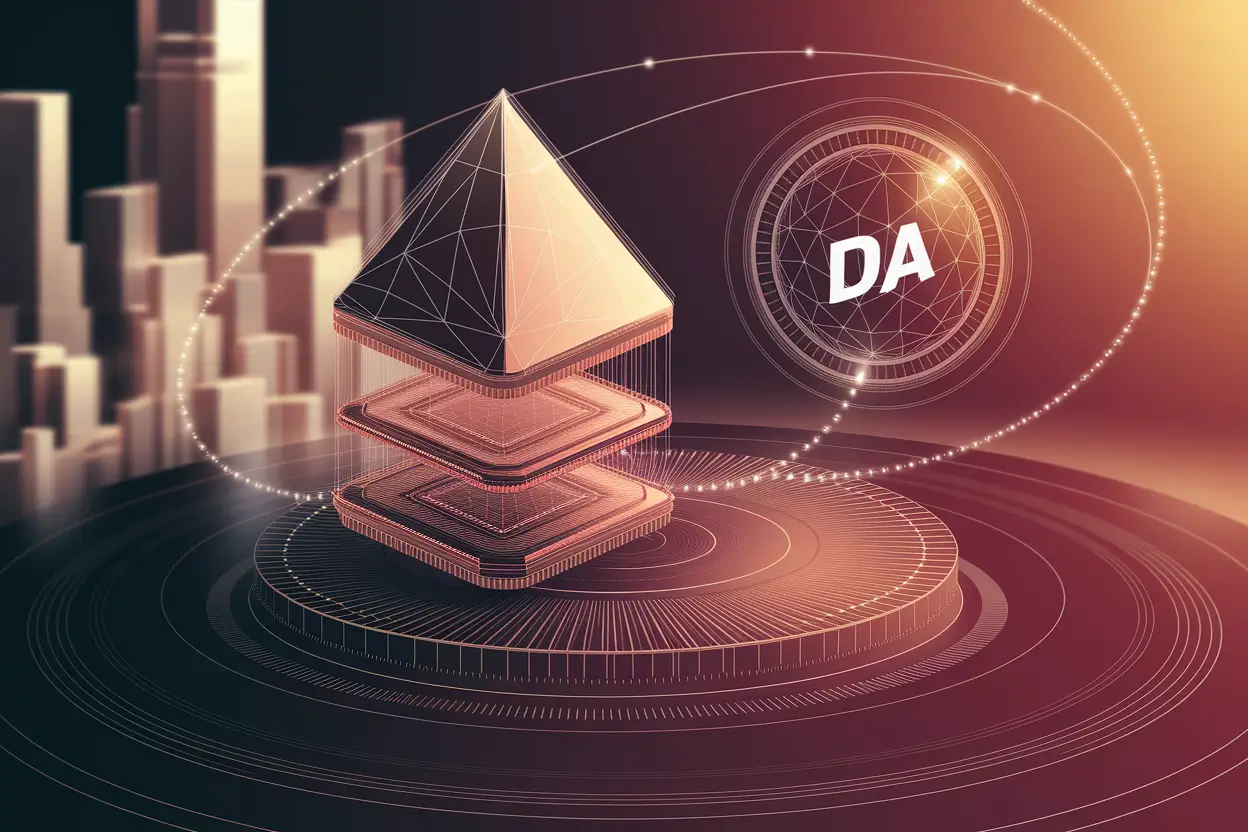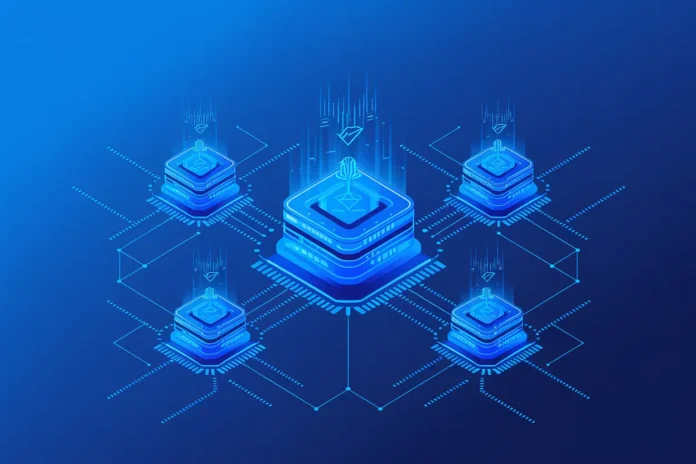Smart contracts are transforming the digital business landscape by enabling trustless, automated agreements on blockchain networks. Originally introduced on Ethereum in 2015, smart contracts have since disrupted industries by reducing the need for intermediaries, lowering transaction costs, and enhancing transparency. In 2025, the advancement of this technology has reached new heights with breakthroughs in scalability, cross-chain interaction, AI integration, security, and more. In this article, we explore how smart contracts work, their benefits and risks, current use cases, and emerging trends defining the future of decentralized automation.
What Are Smart Contracts and How Do They Work?
At their core, smart contracts are self-executing pieces of code anchored to a blockchain that operate based on a predefined set of rules.
- Decentralized: No central authority controls the execution; it’s enforced by the network.
- Immutable: Once deployed, the contract code can’t be changed without significant governance or technical design (such as upgradeable proxies).
- Transparent: The code and its execution are visible on public chains, ensuring accountability.
- Deterministic: Given the same input, every node on the network will yield the same result.
- Composable: Smart contracts can interact with other smart contracts, enabling complex, modular systems like DeFi protocols.
Benefits of Smart Contracts
Smart contracts present several advantages that appeal to developers, businesses, and users worldwide:
- Efficiency: Automates tasks without delays from human intervention.
- Cost Reduction: Eliminates intermediaries and associated fees.
- Security: Enforced by cryptography and consensus mechanisms.
- Innovation: Supports decentralized autonomous organizations (DAOs), DeFi, NFTs, and more.
- Global Reach: Accessible from anywhere with an internet connection.
Challenges and Limitations of Smart Contracts
Despite their potential, smart contracts are not without risks.
- Code Vulnerabilities: Exploits can permanently lock or drain funds.
- Immutability Issues: Hard to patch bugs post-deployment.
- Scalability Constraints: Some blockchains suffer from limited throughput.
- Transaction Fees: Congestion leads to high gas costs.
- Legal Ambiguity: Jurisdictions have varying interpretations and regulations.
Popular Use Cases for Smart Contracts
Smart contracts are being adopted across multiple industries:
- DeFi: Automated platforms for borrowing, lending, trading (e.g., Uniswap, Compound).
- NFTs: Ownership and provenance in art, collectibles, games.
- Supply Chain: Tokenized goods tracking and compliance.
- Real Estate: Title transfers and escrow services.
- Insurance: Claims triggered via IoT and oracles.
- Governance: Transparent DAO voting mechanisms.
- Identity: Blockchain-verified credentials.
Real-World Examples of Smart Contracts
There’s no shortage of innovative platforms already leveraging smart contracts:
- Uniswap: Facilitates decentralized swapping of ERC-20 tokens.
- Compound: Automates interest rates for lending and borrowing crypto assets.
- Filecoin: Smart contracts manage decentralized storage contributions.
- MakerDAO: Maintains the DAI stablecoin using collateralized debt positions.
- Chainlink: Connects smart contracts with real-world data through oracles.
Smart Contracts and Multi-Chain Interoperability
The 2025 edition of smart contracts features unprecedented multi-chain functionality. Interoperability protocols like Cosmos, Polkadot, and LayerZero allow smart contracts to communicate across different blockchains. This enables use cases such as:
- Cross-chain DeFi strategies
- Interoperable NFT marketplaces
- Bridge-free asset transfers
Privacy-Enhanced Smart Contracts with ZK Technology
Advanced encryption methods like zk-SNARKs and zk-STARKs are bringing privacy to smart contracts. Users can now:
- Execute confidential financial transactions
- Verify identities without revealing personal data
- Own NFTs anonymously
- Vote in DAOs without exposing choices
The introduction of privacy layers represents a critical leap toward real-world enterprise adoption where data sensitivity is paramount.
AI Meets Smart Contracts in 2025
Artificial Intelligence is now being paired with smart contracts in hybrid systems. AI modules operate off-chain to power:
- Predictive analytics (e.g., dynamic pricing models)
- Fraud detection algorithms
- Real-time treasury optimization for DAOs
The resulting synergy between deterministic contracts and intelligent agents is enabling adaptive, next-gen decentralized services.
Account Abstraction and UX Improvements
Thanks to Ethereum’s EIP-4337, usability in smart contracts has vastly improved. Smart wallets now empower users to:
- Recover lost accounts through social verification
- Authorize multi-signature transactions with ease
- Pay gas fees using tokens other than ETH
- Define programmable user roles and flows
This reduces onboarding barriers and aligns blockchain UX with mainstream app standards.
Enhancing Safety with Formal Verification
To address the common issue of exploits and hacks, smart contracts in 2025 heavily utilize:
- Formal verification tools: Mathematically prove correctness of contract logic
- AI code audits: Leverage LLMs to detect bugs pre-deployment
- Secure languages: Rust, Move, and Vyper over Solidity
- Audit Layer: Applications include smart contract insurance policies
RWA Tokenization Enabled by Smart Contracts
Real-world asset tokenization, powered by smart contracts, is linking traditional finance to DeFi. Use cases include:
- Tokenized real estate with fractional ownership
- On-chain bond issuance
- Carbon credits as digital to trade
- Token-based dividends
These innovations are enabling hybrid, compliant financial products in emerging markets and beyond.

: Modular and Upgradeable Smart Contracts
Immutability poses challenges, which is why developers are now designing upgradeable smart contracts. Key patterns include:
- Proxy-based architecture via OpenZeppelin
- Upgrade layers controlled by DAO consensus
- Dynamic feature modules loaded on-demand
This helps maintain security without sacrificing flexibility.
Sustainable and Energy-Efficient Smart Contracts
As blockchains move toward Proof-of-Stake and Layer 2 solutions, smart contracts now execute in a more energy-efficient way. Chain-level upgrades and low-gas environments promote greener infrastructure, meeting ecological and ESG compliance metrics for enterprise use.
Simple Solidity Code for Beginners
A foundational smart contract example illustrates escrow logic. A payer transfers funds to an escrow contract, and they are released upon a trigger:
// SPDX-License-Identifier: MIT
pragma solidity ^0.8.20;
contract Escrow {
address public payer;
address public payee;
uint public amount;
bool public released;
constructor(address _payer, address _payee) payable {
payer = _payer;
payee = _payee;
amount = msg.value;
released = false;
}
function release() external {
require(msg.sender == payer, "Only payer can release");
require(!released, "Already released");
released = true;
payable(payee).transfer(amount);
}
}Real-world systems expand on this with security add-ons like oracles, upgradability, and role control.
Smart Contracts vs. Alternatives
| Aspect | Smart Contracts | Traditional Contracts | Web2 Code |
|---|---|---|---|
| Trust Requirement | None (Enforced by code) | High (Requires legal enforcement) | Medium (Platform control) |
| Automation | Yes | No | Conditional |
| Immutability | Yes | No | No |
The Future Outlook of Smart Contracts in 2025
Smart contracts in 2025 are no longer a niche tool—they are forming the digital backbone of autonomous infrastructure. With features like cross-chain operability, privacy layers, AI collaboration, and institutional-grade security, smart contracts are becoming universal agreement protocols.
Expect increased adoption in fintech, IoT, global trade, and governance. Law, finance, commerce, and software are converging into a single programmable layer through these contracts.
FAQs About Smart Contracts
Are smart contracts legally binding?
This depends on jurisdiction. While not all governments recognize them formally, they can be enforced under certain digital or contract laws depending on their structure and context.
Can smart contracts be hacked?
Yes, improperly coded contracts can be exploited. That’s why audits, formal verification, and secure languages are critical.
Which platforms support smart contracts?
Ethereum, Solana, Polkadot, Avalanche, Binance Smart Chain, Sui, Aptos, Cosmos, and more support different smart contract models.
What industries use smart contracts most?
Finance, real estate, art, logistics, gaming, and insurance are some of the most active sectors using smart contracts today.
Are transactions using smart contracts reversible?
No, once codes are executed and a transaction completes, it’s immutable unless another contract is written to perform a corrective action.



